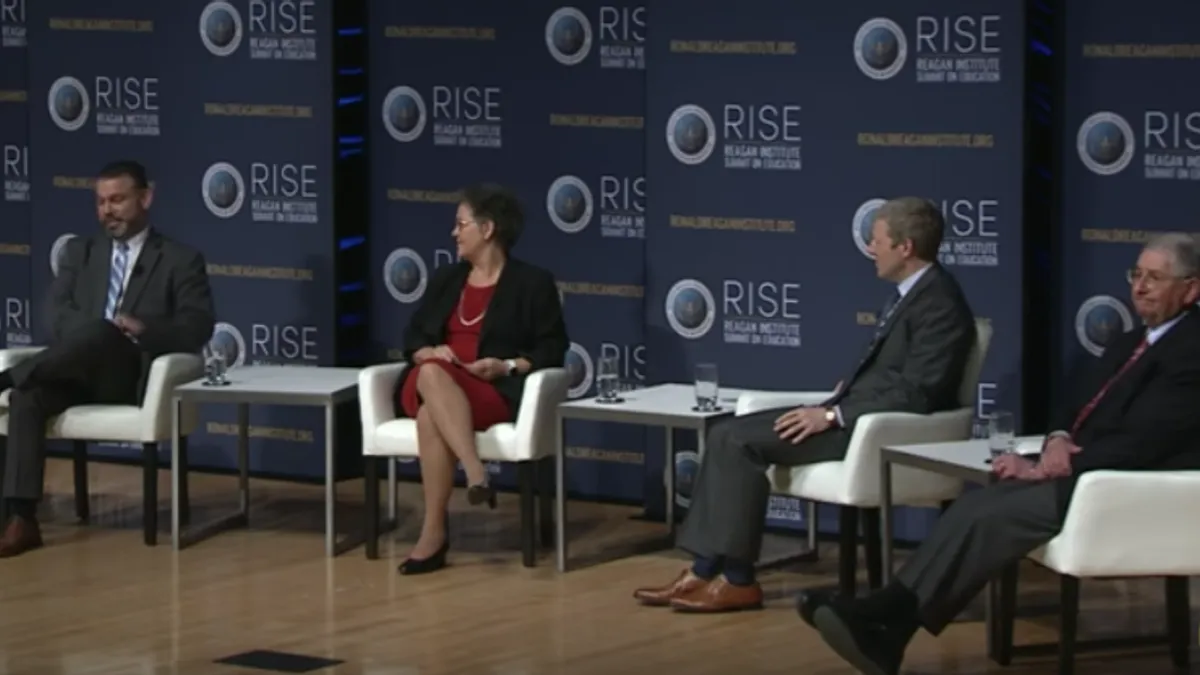Dive Brief:
- With recent research highlighting the benefits of social and emotional development in preparing students for the workforce, experts at the 2019 Reagan Institute Summit on Education (RISE) discussed the implementation and measurement of whole-child educational competencies in schools.
- Linda Darling-Hammond, president and CEO of the Learning Policy Institute, said many students don't have social-emotional competencies needed for today's workforce — such as self-regulation and executive function skills — and they need to be explicitly taught at an early age. Afterward, infusing these skills into instruction can be as easy as making time for peer essay review or promoting effective group work, she said.
- However, the ability to measure these skills "hasn't caught up to the enthusiasm," Darling-Hammond said, and Marc Sternberg of the Walton Family Foundation added that teachers need to know how they will be held accountable for teaching these skills. Other issues, former Assistant U.S. Education Secretary Chester Finn Jr. added, include potentially less rigorous academics and an even heavier burden on educators.
Dive Insight:
The 21st century has brought with it a new set of demands for skills needed to be successful, and in turn, educators have been charged with preparing students for tomorrow's world. Rather than promoting a narrow focus on academics, the growing push for whole-child education examines students from a more comprehensive lens — one that includes their physical and mental health, the safety of their environment and their relationships with the community.
Research has continued to examine the role of non-academic skills and their role in today's world. In January, the Aspen Institute's National Commission on Social, Emotional and Academic Development released its "From a Nation at Risk to a Nation at Hope" report, which analyzed stressed that social-emotional development is an integral part of learning and success and that enhancing these skills helps students both inside and outside the classroom.
There are, however, still underlying questions about how to measure these non-academic competencies and what teachers should be charged with instilling in their students. And the transition to a new approach to learning, as Finn noted, can come with risks if not implemented well.
For example, placing a greater emphasis on whole-child curricula is potentially less challenging and can lead lower achievement among students. A study from researchers at the University of California Irvine supported this position and found that preschools that only used a whole-child curriculum weren't giving students the math and literacy tools they needed for kindergarten, while students with literacy- or math-focused curricula had higher scores than those in classrooms with whole-child programs.
To avoid a less-challenging academic environment and still emphasize the effectiveness of whole-child education, districts or schools looking to implement this type of curriculum can consider adding a supplemental program that specifically addresses a certain skill set, whether in math, reading or social-emotional learning. Additionally, by examining student performance data, administrators can kickstart professional development opportunities for educators that help them better understand students' needs and what learning methods are most successful in giving them the skills they need to be successful — both in and beyond the classroom.











